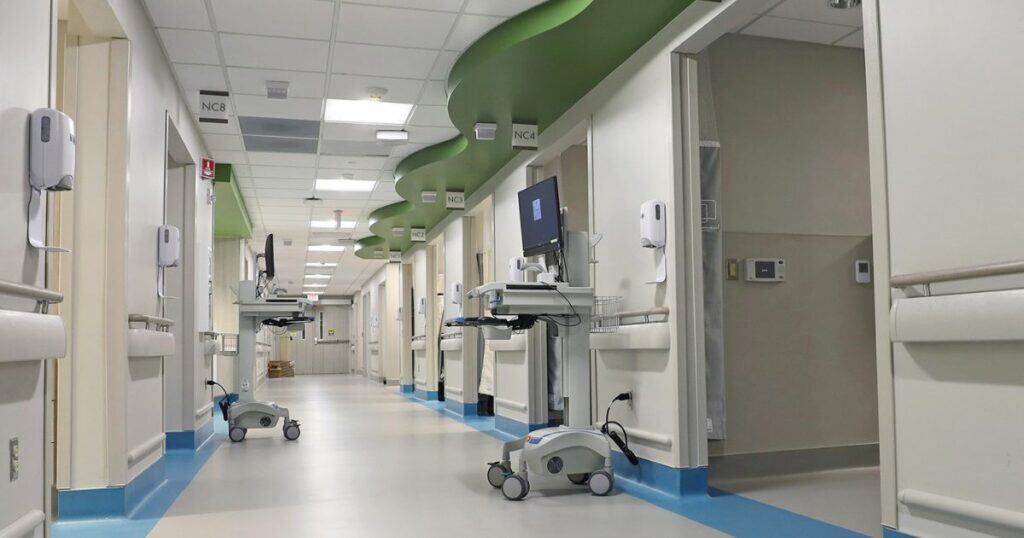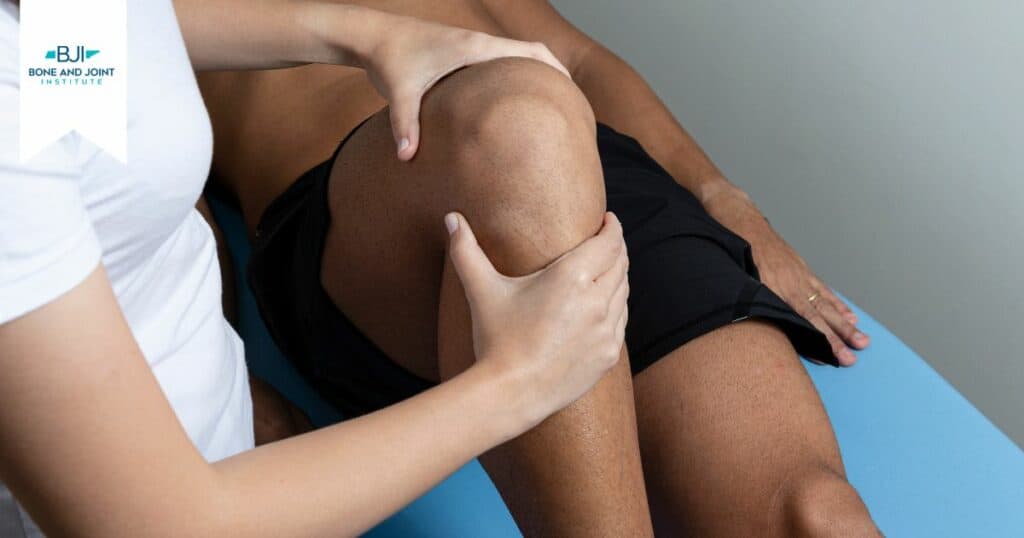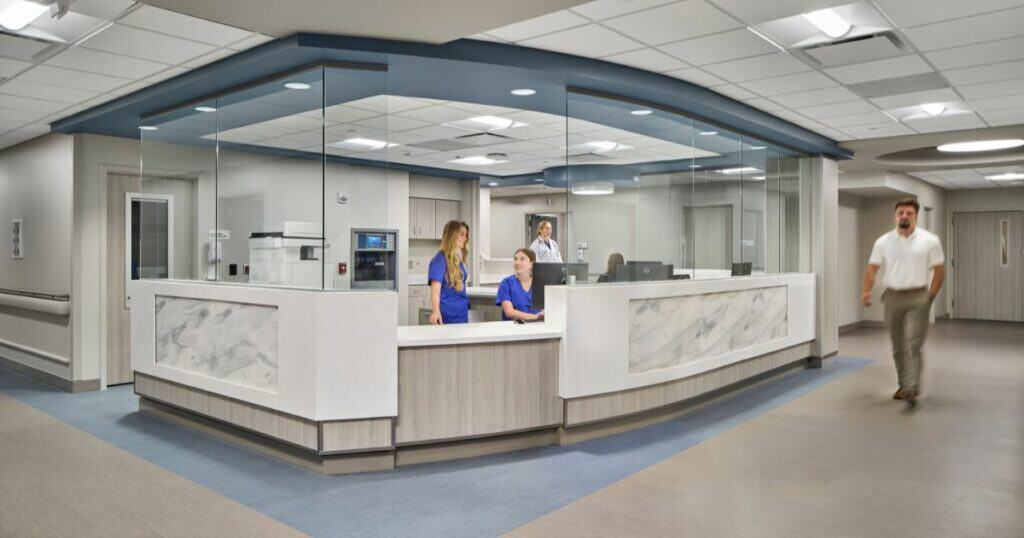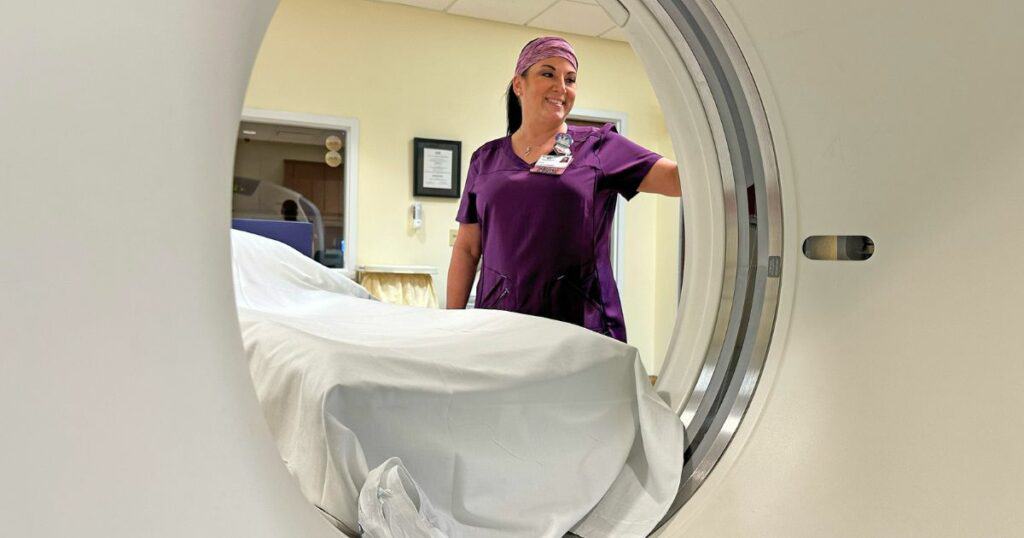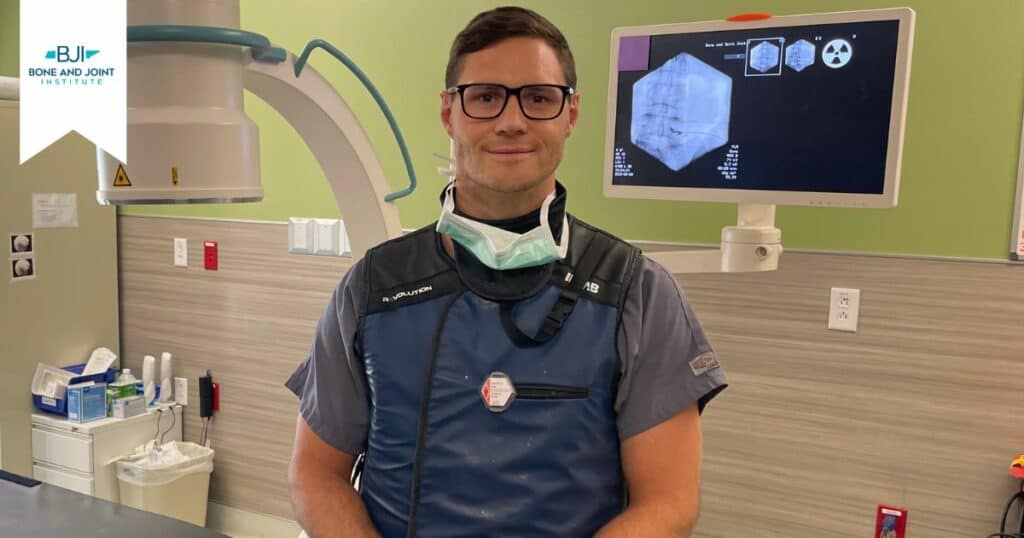Total Knee to PT with Lindsay Bradshaw
Published: April 17, 2025
Originally published in the Williamson Herald —
When we hear that a family member or loved one needs a knee replacement, we often grimace at the thought of a long recovery before they regain their quality of life. But, with expert guidance from physical therapists—like the ones at Bone and Joint Institute of Tennessee—the recovery process can be very manageable, helping patients get back on their feet sooner than they might expect.
Lindsay Bradshaw, physical therapist at Bone and Joint Institute, provided some valuable insight on physical therapy-guided recovery following knee replacement surgery.
Surgery and Recovery
A knee arthroplasty is a procedure in which worn-down cartilage in the knee joint is replaced with artificial implants to reduce pain and improve long-term mobility. A total knee replacement replaces all parts of the joint, while a partial knee replacement focuses on more localized areas of damage. Since arthritis is the primary contributing factor, most knee replacement patients are advanced in years. However, the procedure can be performed on younger patients depending on their specific anatomy and orthopaedic needs.
“Pain is unfortunately an expected part of the recovery process following knee replacement,” said Bradshaw. “But it’s our responsibility as physical therapists to ensure it is managed correctly.”
Patients usually begin outpatient physical therapy sessions about two days following the knee arthroplasty. Although the ultimate goal is functional mobility, the initial milestones focus on range of motion and activation of the quadricep muscle.
“When patients come to us from Bone and Joint Institute physicians, we can rest assured that they were cared for by expert surgeons,” said Bradshaw. “These surgeons make sure to exhaust all conservative methods, such as injections, medications, physical therapy or less invasive knee surgeries if at all possible before resorting to knee replacement. They also encourage patients to strengthen surrounding muscles in preparation for the procedure. BJIT also has a pre-operative education class patients can take to prepare themselves for the process of having a knee replacement. This includes information on nutrition, home safety, adaptive equipment, and the rehabilitation process.”
Bradshaw said that many patients instinctively stiffen up to guard themselves against potential pain, but it is critical to attempt small movements in those first few sessions to achieve the outcomes needed and decrease the risk of delayed healing and progress back to activities of daily living.
“Our end goal is to have patients return to daily activities like sitting, standing or climbing stairs, but, first, we must strengthen the surrounding muscles to improve stability,” said Bradshaw. “We want to promote healing while limiting discomfort.”
Pain Management
To reduce excess pain, physical therapists may use manual soft tissue techniques in the quadricep, calf or knee area. However, compliance with an at-home rehab program is a crucial part of recovery as well as is staying ahead of the pain by taking prescribed medications, icing and elevating your leg and limiting time in weightbearing positions in the days following surgery.
“Some discomfort is expected during rehab recovery, but it can be frustrating at times,” said Bradshaw. “I remind my patients that while knee replacement physical therapy sessions usually last about six to eight weeks, they may begin to see significant improvements with pain and function around week four. It’s important to take recovery one day at a time.”
Recovery
Recovery timelines vary based on activity level, age, prior level of function and range of motion prior to surgery, and total knee replacement recovery typically lasting longer than recovery from partial knee replacements. However, the more mobility a patient gains, the less discomfort they generally experience.
While increased mobility often leads to greater discomfort, providers set recovery milestones to ensure patients aren’t doing too much too soon. Following surgery, patients are encouraged to start light walking activity that same day to promote mobility in the new joint. For the first few weeks, many patients rely on adaptive equipment like walkers before progressing to a cane until they are able to walk independently without a limp.
“We work with each patient and their specific needs, taking into account safety, progress and lifestyle,” said Bradshaw. “For example, we may mimic daily work activities in physical therapy to help patients prepare to return to their daily lives and careers.”
Although the decision to return to normal activity levels is ultimately up to the physician, patients should self-monitor after completing physical therapy. Full recovery may take six months to a year.
“Many patients believe that they will not be able to return to the activities they love after a knee replacement procedure, but that is not the case,” said Bradshaw. “We often see patients resume golf, tennis, pickleball and walking. The only restrictions you may have are avoiding high-impact activities that can shorten the lifespan of the implant.”
Whatever the procedure, physical therapists are here to help you by prioritizing your needs. Since the physical therapists at the Bone and Joint Institute already have relationships with the surgeons, your entire care team can work together to ensure your best outcome. This constant communication, combined with high-quality care, makes Bone and Joint Institute a trusted choice for knee replacements from surgery to recovery.
For more information or to schedule an appointment, click here.
Total Knee to PT with Lindsay Bradshaw
Originally published in the Williamson Herald —
When we hear that a family member or loved one needs a knee replacement, we often grimace at the thought of a long recovery before they regain their quality of life. But, with expert guidance from physical therapists—like the ones at Bone and Joint Institute of Tennessee—the recovery process can be very manageable, helping patients get back on their feet sooner than they might expect.
Lindsay Bradshaw, physical therapist at Bone and Joint Institute, provided some valuable insight on physical therapy-guided recovery following knee replacement surgery.
Surgery and Recovery
A knee arthroplasty is a procedure in which worn-down cartilage in the knee joint is replaced with artificial implants to reduce pain and improve long-term mobility. A total knee replacement replaces all parts of the joint, while a partial knee replacement focuses on more localized areas of damage. Since arthritis is the primary contributing factor, most knee replacement patients are advanced in years. However, the procedure can be performed on younger patients depending on their specific anatomy and orthopaedic needs.
“Pain is unfortunately an expected part of the recovery process following knee replacement,” said Bradshaw. “But it’s our responsibility as physical therapists to ensure it is managed correctly.”
Patients usually begin outpatient physical therapy sessions about two days following the knee arthroplasty. Although the ultimate goal is functional mobility, the initial milestones focus on range of motion and activation of the quadricep muscle.
“When patients come to us from Bone and Joint Institute physicians, we can rest assured that they were cared for by expert surgeons,” said Bradshaw. “These surgeons make sure to exhaust all conservative methods, such as injections, medications, physical therapy or less invasive knee surgeries if at all possible before resorting to knee replacement. They also encourage patients to strengthen surrounding muscles in preparation for the procedure. BJIT also has a pre-operative education class patients can take to prepare themselves for the process of having a knee replacement. This includes information on nutrition, home safety, adaptive equipment, and the rehabilitation process.”
Bradshaw said that many patients instinctively stiffen up to guard themselves against potential pain, but it is critical to attempt small movements in those first few sessions to achieve the outcomes needed and decrease the risk of delayed healing and progress back to activities of daily living.
“Our end goal is to have patients return to daily activities like sitting, standing or climbing stairs, but, first, we must strengthen the surrounding muscles to improve stability,” said Bradshaw. “We want to promote healing while limiting discomfort.”
Pain Management
To reduce excess pain, physical therapists may use manual soft tissue techniques in the quadricep, calf or knee area. However, compliance with an at-home rehab program is a crucial part of recovery as well as is staying ahead of the pain by taking prescribed medications, icing and elevating your leg and limiting time in weightbearing positions in the days following surgery.
“Some discomfort is expected during rehab recovery, but it can be frustrating at times,” said Bradshaw. “I remind my patients that while knee replacement physical therapy sessions usually last about six to eight weeks, they may begin to see significant improvements with pain and function around week four. It’s important to take recovery one day at a time.”
Recovery
Recovery timelines vary based on activity level, age, prior level of function and range of motion prior to surgery, and total knee replacement recovery typically lasting longer than recovery from partial knee replacements. However, the more mobility a patient gains, the less discomfort they generally experience.
While increased mobility often leads to greater discomfort, providers set recovery milestones to ensure patients aren’t doing too much too soon. Following surgery, patients are encouraged to start light walking activity that same day to promote mobility in the new joint. For the first few weeks, many patients rely on adaptive equipment like walkers before progressing to a cane until they are able to walk independently without a limp.
“We work with each patient and their specific needs, taking into account safety, progress and lifestyle,” said Bradshaw. “For example, we may mimic daily work activities in physical therapy to help patients prepare to return to their daily lives and careers.”
Although the decision to return to normal activity levels is ultimately up to the physician, patients should self-monitor after completing physical therapy. Full recovery may take six months to a year.
“Many patients believe that they will not be able to return to the activities they love after a knee replacement procedure, but that is not the case,” said Bradshaw. “We often see patients resume golf, tennis, pickleball and walking. The only restrictions you may have are avoiding high-impact activities that can shorten the lifespan of the implant.”
Whatever the procedure, physical therapists are here to help you by prioritizing your needs. Since the physical therapists at the Bone and Joint Institute already have relationships with the surgeons, your entire care team can work together to ensure your best outcome. This constant communication, combined with high-quality care, makes Bone and Joint Institute a trusted choice for knee replacements from surgery to recovery.
For more information or to schedule an appointment, click here.
Published: April 17, 2025


